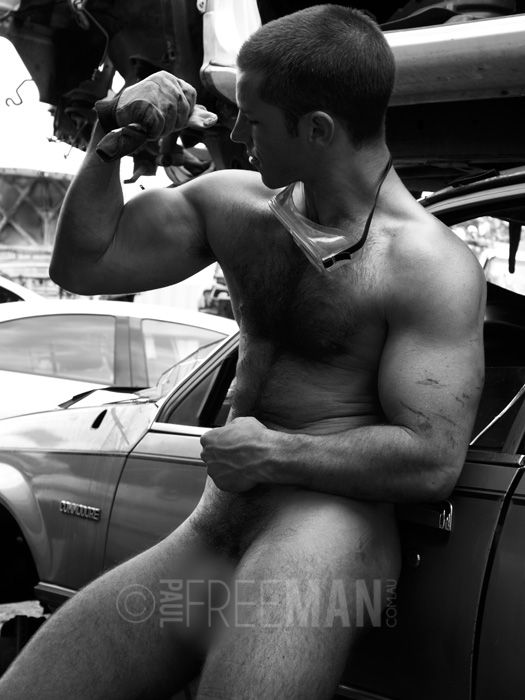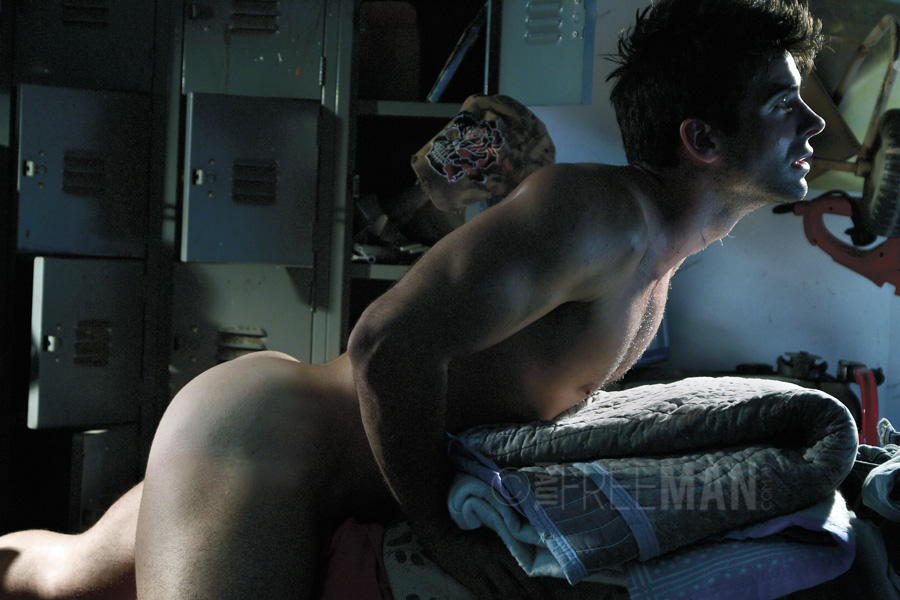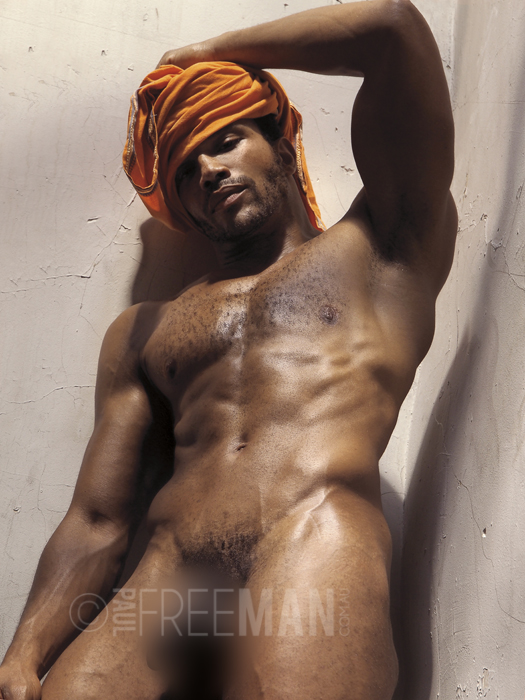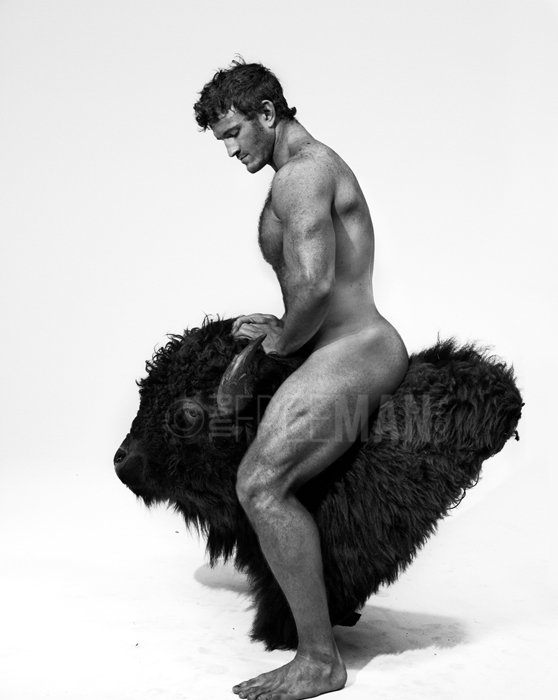How do you get your art work out to a wider audience on-line and using social media when your speciality is photographing the male nude? The short answer is you don't. The long answer is you do but only after amending it in one of a variety of ways, or limiting what work you show people, and what you say about it.
Besides the social media community standards rules that restrict what may be shown, there are other reasons for censoring work on-line if your work involves showing real life people naked, no matter how artfully.
It becomes as much about protecting the privacy of the people you shoot, since any image of a beautiful male that is posted on-line is likely to be 'shared' and re-'shared', commented on and, in these days of Facebook and on-line research (a friendlier term for what can sometimes amount to stalking), pretty well any model’s real life identity is going to be discussed on some blog or another, and if precautions aren't taken, the very real fear is there will come a time when a Google search by name for a particular lawyer, doctor, teacher or politician, who may have once posed naked for me, will bring up their naked images. And for someone who often photographs people who have professions that don't thrive on naked exposure, this poses a stressful (with a capital ‘S’) problem.
Not that I have all the answers. Long ago I stopped using my subject’s real names in my books, and have never posted full frontal nude images on my website or of course on social media sites. However, recently a young man who was sitting his bar exam with a view to opening a practice, unearthed on a search of his name, a topless image of himself, on which had been expertly photo shopped the bottom half of a body from a porn image, sporting a huge erection. This was on a site where this effect had been applied to the top half of many mainstream celebrities, so he was in good company. The site that housed these creations has since been closed due to so many complaints. But the fact is this could have been embarrassing for the guy and all because the site in question accessed and used his real name with the image. OK nothing can be done about this kind of shenanigans, but many times I have had to contact Tumblr on behalf of one of my subjects then prove that the copyright on an image is mine, in order to have it taken down, as a result of a person scanning the naked image from a book, posting it and naming the person in the photo. This is often done innocently by people on the naïve assumption that everyone wants to be in the limelight, and bask in the glory of being a desirable celebrity of sorts, and that all creative work obtained in public belongs to the public and not to the creator.
This is the version I posted on Facebook to avoid any repercussions around their naked state.
Often when I upload an image on social media from one of my books the most common question is “Who is the model?” or “Does anyone know the models name?” (Clearly, as the photographer, I would, but they don’t think to address the person who took and posted the image. Instead they address it loudly to everyone out there in cyber reality.) “Where can I see more of this model?” and “Show more of this model please” is part of the new obsession with the creating, following and liking on-line of celebrities, enabling everyone to be friends with a celebrity, which I suspect is behind the shrill cultist urgency of these questions, which rudely ignore the layers that I nervously hope are inherent in my work, which have more to do with lighting, form and balance of composition, or emotion, or story, or just about enjoying the moment of male beauty captured for what it is, than about reducing it to a few bytes of a hot commodity, a vital clue on the path to finding as many other pictures of the same man as possible, in order to feed some insatiable appetite that social media has enabled.
For that reason I will now use first names only when referring to the subject of a shot and try to give some interesting information about the shot without revealing much about the subject’s life. (And notice how I purposely avoid calling the men I use as my subjects models, because that term originally applied to a professional is also now tainted by the explosion of plasticity, and is as easily used to denote a person being photographed solely for the narcissistic purpose of receiving popular validation.) I know it would generate more likes if I was going to cross pollinate my work with model Facebook or Instagram profiles, or link them, and I will do that if it is feasible, but it is not the kind of attention to my work that is going to sell my art. Rather it is feeding the beast that devours everything that is free, and moves on.
I actually personally don't necessarily want people to know who is in a photo either. If I am trying to create an illusion of some period of time or some timelessness in a photo I don’t want it yanked back to mundane contemporary reality by the comparison of my photo with a dozen other pictures of the same model, reducing my work to a single sample of a model's 'port'. If the ‘story’ presented in a photograph feeds sufficient stimulus to the imagination, is it really necessary to know the identity of a person in a photograph in order to enjoy it? Maybe it is in these days where everybody can be somebody, and maybe that trend will pan out to be a good thing. But all this commercialising and reaching out indiscriminately on-line to the masses has terrifying consequences for an insecure artist, one of them being that the they themselves might be the biggest sucker when it comes to wanting their work to be 'liked' by everyone!
But it has enabled me to reach people who 'get ' the work in its own right. The other day, right under a comment “Who's the model?” was a remarkable comment “I love the anonymity of the models in your work, the fact that they stand for some idealised everyman, and that it is never about who is in the shot, but enjoying a story and the universality of the emotion going on.” Intelligent and thoughtful comments and messages can keep me going for weeks. They are the life support of an artist.
And I don’t want to sound ungrateful, when social media, sharing and everyone having Tumblr blogs has provided, more than ever before, a way of having your work reach more people. In the old days it was print magazines that did this for you. Now everyone can help grow your market and promote your work by sharing it. Provided they respect the fact that it is your work to start with. Which is the main reason photographers nowadays will not only crop work but also make sure it is securely watermarked so that no matter where the photo ends up, your name your signature as the artist, is still on the work. Of course there are many ways of obliterating a watermark and cropping that out as well, and I have seen my images used many a time as someone else's work or someone else’s profile picture, in blogs, on Instagram, all without accreditation. One guy even photo-shopped a tattoo onto an outback portrait of mine (a bastardisation in itself) before using it as his profile shot on Facebook. A follower pointed it out to me, and I posted it on my Facebook page in order to get feedback from followers as to which shot was better, the original or the altered. (You have to be at least a little thick skinned to go asking questions like that on Facebook, and be prepared for punters to like the adulterated version, which a few did! )
Once we accept that there are pitfalls in putting work 'out there' with potentially terrifying consequences beyond having work merely judged, what work can actually be shown according to the social media rules and how does that inhibit me when a lot of my best work involves the naked male? There are a number of options, none of which is entirely palatable and all of which involve compromise. The way to look at it is that social media is like a public space such as a beach or public square, or at least this is how it has been explained to me. There will always be people in public spaces who are offended by the naked human body, except when it is presented as art in a 'traditional' sense, i.e. a couple of steps removed from reality. Marble nudity is fine. Oil painted nudity is fine, especially cubist or abstract, and preferably not too photo real, and photographic representations are too lifelike and therefore offensive, too close to real life nakedness.
This version above was shared on Facebook while the version to the right is the originally printed photograph taken from Heroics II.
So the options available in this public space are: 1) Choose photos that are portraits, or don't contain nudity. That's fine but doesn't give a broad enough sense of any artist statement I would write, which would be bound to include a phrase about my “determination to bring to a wider public than a microcosmic gay fringe, in a repressed patriarchal society, the unashamed beauty of the full male nude”; 2) Crop photos that show nudity in such a way that you don't totally lose the sense of the photograph in doing so. Impossible to achieve really since the way the shot was framed in the first place, then chosen and edited, is precisely because of the shape and structure of the composition, and it's balance, in total. Any cropping will merely produce an alternate, new photograph which will assumedly have less power or impact. This is not always the case though. Sometimes a crop done well will reveal an entirely new photo with an entirely new emphasis. But if you want to advertise an already existing photo in a book, it is pretty pointless inventing a new cropped version of it; 3) Show the full photograph and cover the 'offending' part. Ugly and unsightly defacing will no doubt detract from the original unashamed intent and the power inherent in that, as well as interrupt any flow of body form that made the photo graceful or worthy to begin with. I could put a link through to my website where people could see the full image , except that for the reasons discussed above the website at best can show the image blurred in places rather than covered, a little less of an encumbrance to the work at least, but not ideal.
If the intention of social media exposure ( or should I say non-exposure) is to get people to go look at an actual image by purchasing an actual book, or a print of the photograph, or go an see a real life exhibition of work, it's hard to know which option is going to be the most motivating. I've played around with all options to date and none is ideal. The sophisticated follower will become more curious than the social surfer who will merely comment “Oh boo! Why is it censored” or “Woof, wish we could see just a bit lower (snigger)” or “Stupid Facebook! Where can I get a look at the whole thing” or even worse, “Does anyone know where I can see the whole pic”, “Who took this pic?”, ”Who is the model?”, “Anyone??”…
Yes, indeed, I am quickly getting thick-skinned and training myself to focus on the followers that have constructive things to say and realise that each of those is worth several of the other and is probably going to be a many times more likely to become an art supporter or buyer. And I definitely want to give to as many of them as possible at least some sense of the work that I put in my books, or that might be hung as art, and reach a much wider public than I otherwise would with a taste of what they might find if they have the time these days, to go looking at a book or an exhibition. And do it in such a way that the privacy of my subjects is respected, and I'm not banned from using the relatively cheap marketing tools of social media.
In the slideshow below are some of the recent images I've had to crop for social media, presented as they are within the books, albeit with a watermark and modesty blur where needed.










